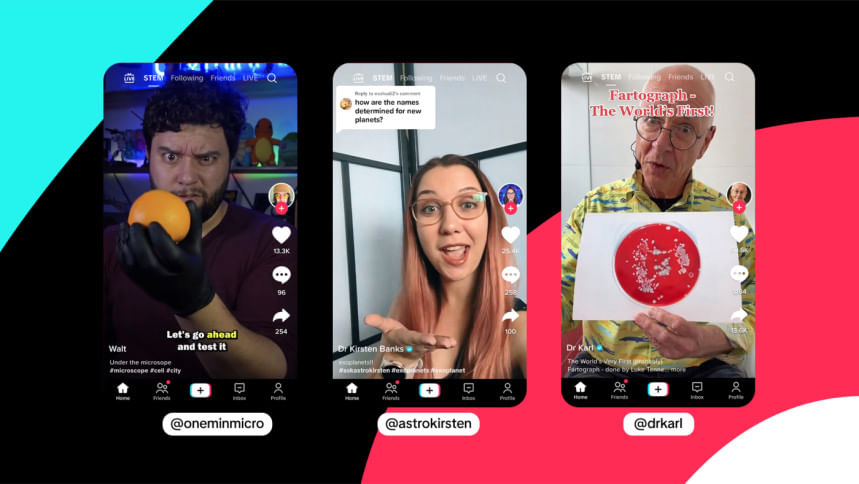Why Bangladesh needs more STEM content on TikTok

Bangladesh does not need to convince young people to spend time on TikTok. It needs to make more of the time they are already spending there. TikTok's punchy format suits bite-sized lessons, quick experiments, and hands-on demos that build confidence and curiosity. With the right curation and partnerships, the platform could become more than entertainment, an accessible route into skills that matter for study, work, and the country's long-term ambitions.
TikTok's dedicated STEM feed has now launched in Bangladesh, creating an in-app home for science, technology, engineering, and maths. The move shifts STEM from the margins of the feed into a visible destination, with curation designed to surface credible explainers, hands-on demos, and problem-solving tips in Bangla and English.
From scrolls to skills
The case for treating TikTok as a learning layer is straightforward. Micro-lessons suit the platform's quick, visual grammar: a single idea, shown clearly, then repeated or remixed until it sticks. A short clip on Newton's laws, a 60-second algebra walkthrough or an Arduino wiring demo can be saved for revision, stitched by a teacher for context, and replayed by a pupil on the bus ride home. The new feed aims to make such content easier to find, so time spent online converts more reliably into understanding and confidence.
Closing the relevance gap
Bangladesh's classrooms are modernising, but many learners still struggle to connect theory to practice. The STEM feed can act as a bridge between textbook concepts and real-world problem-solving: climate explainers tied to heatwaves and flooding; number sense applied to household budgeting; coding snippets that automate repetitive tasks. When students see how an abstract formula helps troubleshoot a fan motor or optimize a spreadsheet, motivation tends to follow. That shift from inert facts to usable tools matters for employability as much as it does for exam performance.
What good looks like in Bangladesh
A strong Bangladeshi STEM feed will feel practical, local, and inclusive. Content should be Bangla-first, with English terms introduced where they aid comprehension. Sequences should build from first principles to exam-style problems, so a learner can watch in order and feel progress. Low-cost experiments with paper bridges, bottle rockets, and simple circuits should sit alongside coding challenges and data-literacy drills that need only a cheap handset. Creators from across the country should feature, so accents, examples, and materials reflect real classrooms, workshops and households.
A coalition to sustain momentum
No single actor can make the feed transformative on its own. Education officials can encourage schools to fold short videos into after-school clubs and TVET modules, and support creator cohorts with micro-grants or data packages.
Universities can turn science communication into credit-bearing studio courses, translating local research into everyday language. Employers who complain of skills gaps can sponsor series aligned to entry-level needs, safety basics, CAD fundamentals and offer internships to top learners.
TikTok can continue to localize curation, elevate underrepresented voices and track meaningful outcomes, not just views. Some already frame the launch of the STEM Feed as a national opportunity; the task now is to turn that optimism into routines that help learners week after week.
The bottom line
With the STEM feed now live, Bangladesh has a chance to turn a popular platform into a pocket classroom. If creators, educators, employers and the platform itself stay aligned on clarity, relevance, and inclusion, the feed can do more than entertain. It can help a generation move from scrolling to solving, and make STEM feel like a language anyone can speak.

 For all latest news, follow The Daily Star's Google News channel.
For all latest news, follow The Daily Star's Google News channel. 



Comments